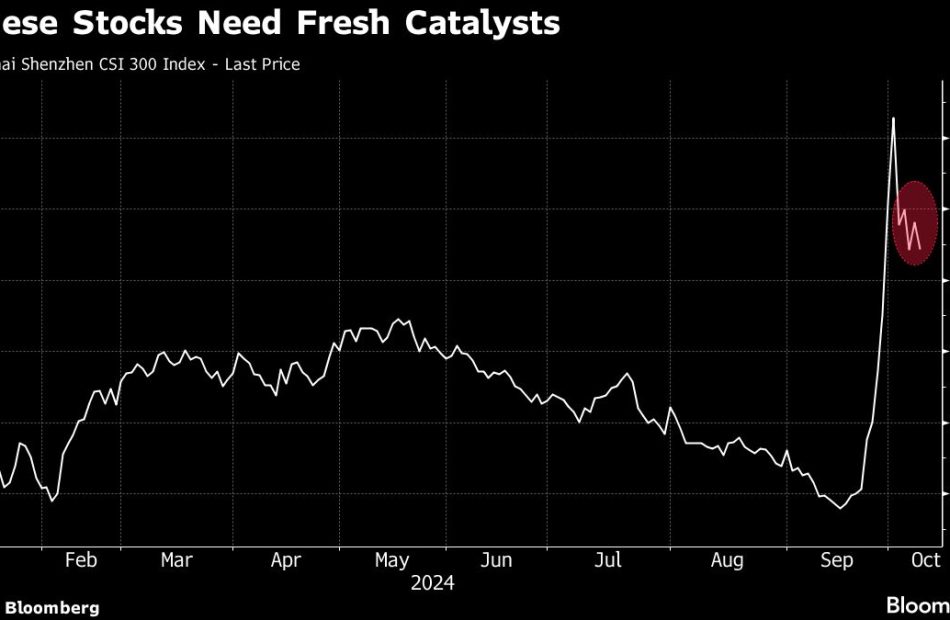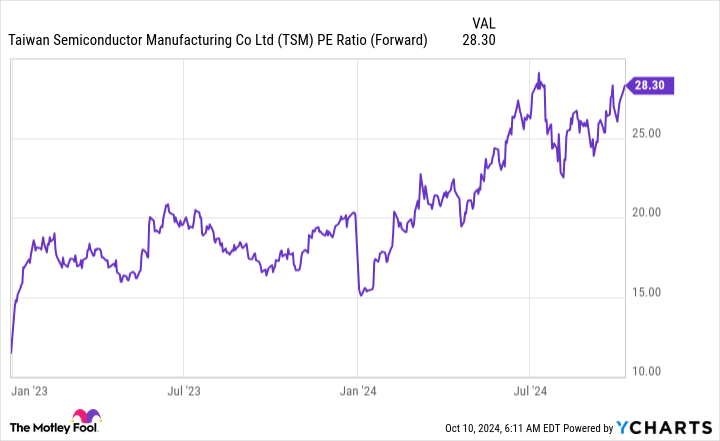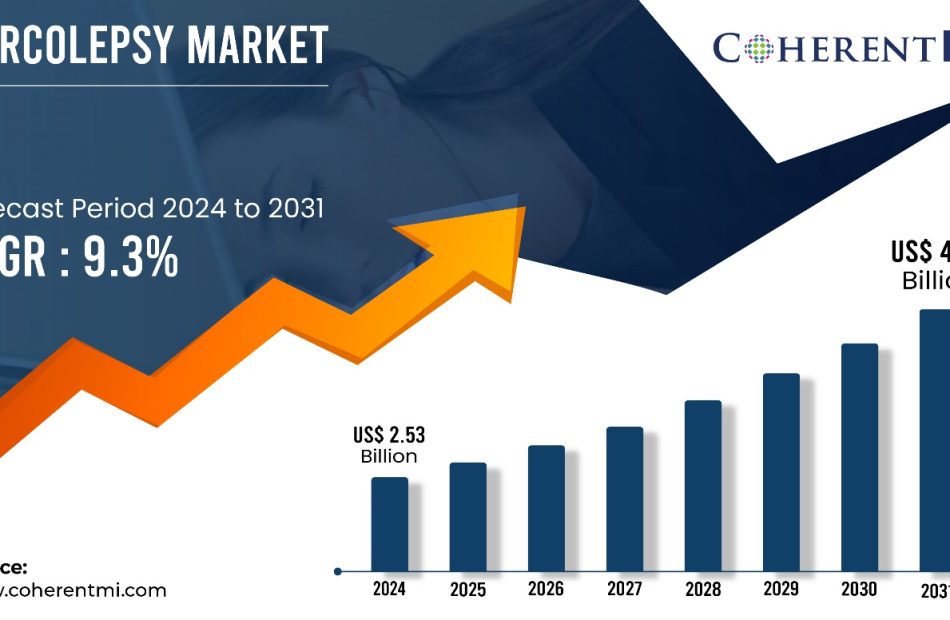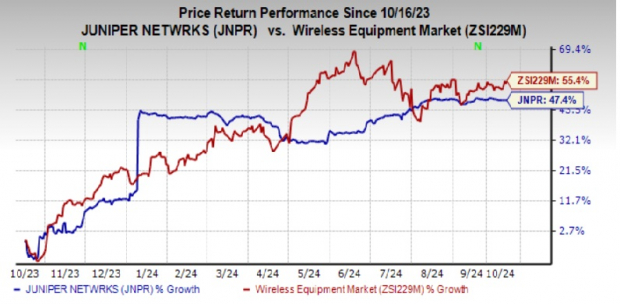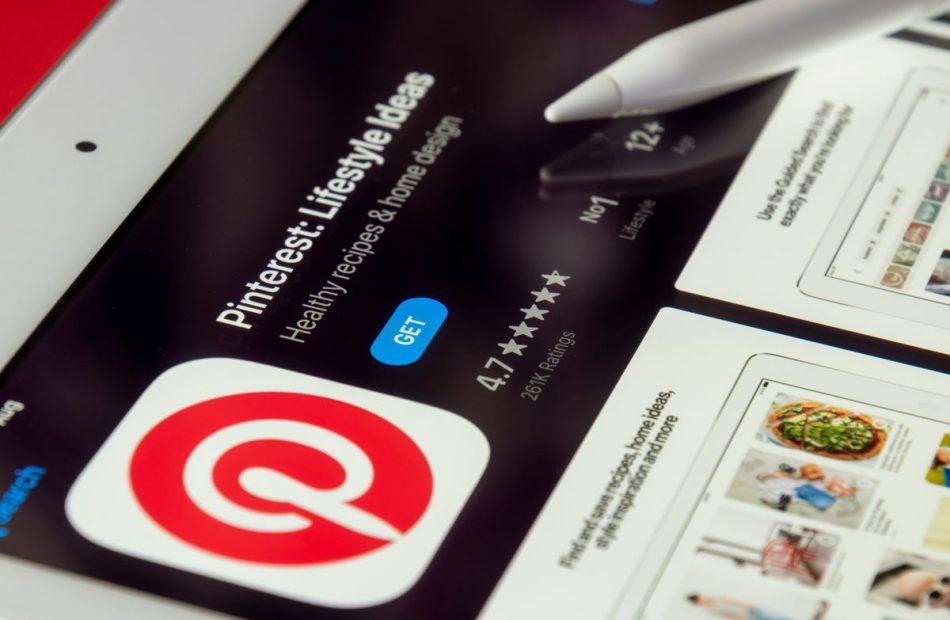Chinese Stocks Dip in Choppy Trade as Investors Debate Next Move
(Bloomberg) — Chinese stocks tumbled as doubts resurfaced on whether Beijing’s stimulus blitz will be enough to prop up an economy mired in deflation and a property crisis.
Most Read from Bloomberg
The CSI 300 Index fell 2.7%, extending losses since an Oct. 8 high to more than 9%. A gauge of Chinese shares listed in Hong Kong slumped 4%, capping its worst day in a week. The yuan also weakened.
Volatility has gripped the market in recent sessions as investors debate the sustainability of the rebound that began late last month, with the lack of clarity over the size of Beijing’s planned fiscal boost weighing on sentiment. Weak recent economic data, including figures on inflation and trade, have underscored the need for more stimulus.
There are concerns that “any stimulus might be more focused on risk mitigation, especially about local government debt, rather than growth,” said Xin-Yao Ng, investment manager of Asian equities at abrdn Asia Ltd. “Investors definitely prefer a bazooka to reflate the economy quickly.”
Tuesday’s price action suggests that investors were unimpressed by a Caixin report that said China may raise 6 trillion yuan ($846 billion) from ultra-long special government bonds over three years. Bloomberg later reported that local authorities will be issuing the notes mainly to refinance their off-balance-sheet debt.
Following the central bank’s easing steps in late September, investors have been clamoring for the government to bolster fiscal spending. Officials promised new measures to support the property sector and hinted at greater government borrowing at a weekend briefing, without giving an amount.
There’s concern “that the stimulus announced so far just isn’t enough,” said Nathan Thooft, chief investment officer and senior portfolio manager at Manulife Investment Management. “We put on a tactical overweight to Chinese equities. We are not necessarily believers that this is a structural shift.”
The yuan slid as much as 0.6% to 7.1343 per dollar in the offshore market, the weakest level in about a month. The so-called China proxies in Asia — currencies that are affected by investor confidence on the country — also dropped.
The Hang Seng China Enterprises Index, which comprises Chinese shares listed in Hong Kong, is now down more than 12% since Oct. 7.
Growing Divide
As the rally falters, a divide is growing among global investors.
Morgan Stanley Wealth Management warned that investors should steer clear of soaring Chinese equities as the stimulus measures won’t be enough to repair the struggling economy. Wells Fargo Investment Institute is also skeptical that the rebound will last given the depressed sentiment surrounding China’s consumers.
UBS Group AG still sees value, saying heightened retail investor interest should give stocks further upward momentum.
China’s export growth slowed more than expected in September, curbing a trade rebound that has been a bright spot for a weakening economy. Loan expansion also disappointed in a sign of still weak domestic demand.
“China’s signal on policy stimulus prompted us to go modestly overweight, especially given depressed valuations,” strategists at BlackRock Investment Institute including Wei Li wrote in a note. “Details have been scant, so we could change our view if future announcements disappoint.”
–With assistance from Sujata Rao and Tian Chen.
Most Read from Bloomberg Businessweek
©2024 Bloomberg L.P.
Tesla's Optimus Robots Were Remotely Assisted By Humans At 'We, Robot' Event
Tesla, Inc. TSLA showed off its humanoid robot, Optimus, at the company’s “We, Robot” unveiling event last Thursday. According to a Bloomberg report, humans were remotely assisting the Optimus robot prototypes with some functions.
The Details: Tesla CEO Elon Musk showcased the latest version of his Optimus robots during the Cybercab (robotaxi) reveal, which also happened at the event, and predicted the humanoid robots would become “the biggest product ever of any kind.” Musk did not reveal the robots were assisted or controlled remotely by humans.
According to the Bloomberg report, Tesla employees remotely oversaw interactions between the Optimus robots and attendees of the event, said the sources who asked not to be identified. The sources reported the Optimus humanoid robot prototypes were able to walk unassisted using AI. Tesla did not immediately respond to Bloomberg’s request for comment.
Read Next: What’s Going On With SoFi Technologies Stock?
Several videos posted on social media show event attendees interacting with the robots who served drinks, sang “Happy Birthday” and even danced with guests. A video posted on X shows an Optimus robot serving in a bartending role and confirming he was being remotely assisted by a human.
“Today, I’m assisted by a human. I’m not yet fully autonomous,” the Optimus robot said in the video.
Another video shows a guest asking Optimus how much of the robot is controlled by AI.
“I can’t disclose just how much, that’s something you’ll have to find out later,” the robot said. “I would say, it might be some. I’m not going to confirm, but it might be some.”
Some Tesla influencers and investors said they felt betrayed or misled by Tesla’s nondisclosure of Optimus’ human assistance. But several analysts felt Optimus’ interactions with guests at the event were impressive and are a potential catalyst for the company.
Wedbush’s Dan Ives highlighted “the massive improvements in Optimus” and said Cybercab and Optimus “could be a major financial contributor to Tesla” following last week’s event.
TSLA Price Action: According to Benzinga Pro, Tesla shares ended Monday’s session 0.62% higher at $219.16.
Read Also:
Photo: Shutterstock
Market News and Data brought to you by Benzinga APIs
© 2024 Benzinga.com. Benzinga does not provide investment advice. All rights reserved.
Wall Street On Edge As Nasdaq Nears Record High, Oil Prices Plummet: Strategist Says There's Opportunity If Resilience Continues
Wall Street mood has become circumspect as traders gear up to receive a slew of earnings reports this week amid the market’s record run. The Nasdaq Composite has been a laggard among the major averages and it remains to be seen if the early sentiment reverses and tech stocks could finish the session with a flourish.
A spate of earnings due ahead of the market may set the tone for the day’s trading. Traders may also focus on any potential preannouncements, the results of a regional manufacturing survey and a couple of speeches by Federal Reserve officials. Energy stocks could lose their verve amid the sharp retreat in energy prices amid waning demand and supply concerns. Bond yields continue to hold firm.
| Futures | Performance (+/-) |
| Nasdaq 100 | -0.12% |
| S&P 500 | -0.05% |
| Dow | -0.06% |
| R2K | -0.07% |
In premarket trading on Tuesday, the SPDR S&P 500 ETF Trust SPY edged down 0.06% to $583.99 and the Invesco QQQ ETF QQQ moved down 0.15% to $496.77, according to Benzinga Pro data.
Cues From Last Session:
Optimism concerning tech earnings season abounded on Wall Street on Monday as the S&P 500 and Nasdaq Composite Indices opened solidly higher and moved roughly sideways before closing higher. The 30-stock Dow opened lower as Boeing Co. BA served as a drag, but the blue-chip average recouped its losses and moved higher in late-morning trading and stayed in the green for the remainder of the session.
As a result, the Dow and S&P 500 set fresh closing and intraday highs, with the former topping 43,000 for the first time ever. The Nasdaq Composite is just under seven points from its all-time high of 18,509.34.
All but one of the S&P 500 sector indices closed higher for the day, with energy stocks notching a marginal loss. IT and utility stocks were the biggest gainers of the session, led by Nvidia Corp. NVDA. The artificial intelligence stalwart ended the session at a record high.
| Index | Performance (+/) | Value |
| Nasdaq Composite | +0.87% | 18,502.69 |
| S&P 500 Index | +0.77% | 5,859.85 |
| Dow Industrials | +0.47% | 43,065.22 |
| Russell 2000 | +0.64% | 2,248.64 |
Insights From Analysts:
Cyclical stocks are poised for relative outperformance, thanks to the recent data that reinforces the resilience of the economy, according to Morgan Stanley analysts. But positioning in cyclicals remains light, said the firm’s Chief U.S. Equity Strategist Mike Wilson.
“This creates opportunity in a sector that we upgraded to overweight last week given rebounding capital markets activity,
a better loan growth environment in 2025, an acceleration in buybacks post Basel Endgame re-proposal, and attractive relative valuation,” he said.
The focus now shifts to the general election, Wilson said. The three high-level dynamics which are still important, according to the strategist, are:
- business cycle remains more important than the election outcome.
- on average, volatility picks up in September of election years and stays elevated through October before decelerating in November.
- history is supportive of a quality bias in election years.
WisdomTree Senior Economist and Wharton Professor Emeritus Jeremy Siegel also expressed a preference for quality names. “Looking ahead, I see opportunity if the current resilience continues,” the economist said.
“Stocks are not cheap by historical standards, but with the fear gauge elevated and investors still largely hedging their bets, we could see a sharp move higher if sentiment turns more positive,” he added.
Siegel said quality remains the key for investors. Small caps are catching up a bit but the fundamentals of large-cap tech companies continue to drive performance, he said. “With inflation moderating and the Fed’s easing cycle beginning, sectors like financials and industrials could benefit from a more favorable economic backdrop,” he added.
Early reports from banks have been solid and could set the tone for broader market gains, the economist said.
See also: Best Futures Trading Software
Upcoming Economic Data
- The New York Federal Reserve is scheduled to release the results of its regional manufacturing survey at 8:30 a.m. EDT. Economists, on average, expect the index to decline sharply from 11.5 in September to 3 in October.
- San Francisco Fed President Mary Daly will speak at 11:30 a.m. EDT.
- The Treasury will auction three- and six-month bills at 11:30 a.m. EDT.
- Fed Governor Adriana Kugler is scheduled to make a public appearance at 1 p.m. EDT.
Stocks In Focus:
- Wolfspeed, Inc. WOLF climbed nearly 10% in premarket trading after the company announced up to $750 million in proposed direct funding under the CHIPS and Science Act and an additional $$750 million of new financing from a consortium led by Apollo Global.
- Trump Media & Technology Group Corp. DJT climbed over 10% as the stock reacted to Republican presidential nominee Donald Trump’s improving fortunes.
- Chipmakers Nvidia, Micron Technology, Inc. MU and Advanced Micro Devices, Inc. AMD and AI server maker Super Micro Computer, Inc. SMCI were all trading lower, following their recent gains.
- Energy stocks tumbled in reaction to the 4%+ pullback in oil prices.
- Bank of America Corporation BAC, Charles Schwab Corporation SCHW, Citigroup Inc. C, Goldman Sachs Group, Inc. GS, PNC Financial Services Group, Inc. PNC, Johnson & Johnson JNJ, UnitedHealth Group Incorporated UNH and Walgreens Boots Alliance, Inc. WBA are among the companies reporting their quarterly results ahead of the market opens.
- Those reporting after the close include J.B. Hunt Transport Services, Inc. JBHT and United Airlines Holdings, Inc. UAL.
Commodities, Bonds And Global Equity Markets:
Crude oil plunged over 4.50% in the early New York session after reports said Israel won’t launch an attack on Iran’s crude oil infrastructure, and gold futures were modestly higher. Bitcoin BTC/USD firmed up over the past 24 hours and traded above the $65.5K level. The benchmark 10-year old Treasury note yield weakened slightly to 4.065%.
In Asia, Hong Kong and Chinese markets retreated sharply as a string of recent weak data weighed down on sentiment, even as traders looked ahead to further stimulatory measures from the government and the central bank. Most other major markets advanced, taking cues from the positive performance of Wall Street stocks overnight.
European stocks traded mostly lower in early hours amid falling oil prices.
Read Next:
Photo via Shutterstock
Market News and Data brought to you by Benzinga APIs
© 2024 Benzinga.com. Benzinga does not provide investment advice. All rights reserved.
My 4 Best Stocks to Buy Right Now
Although the market is still hitting record highs, many stocks are still good buys. The key isn’t to look at where the market is now; it’s to look at where some stocks may be heading if they can keep up their growth trajectory.
If these four can maintain their general direction, they’ll continue rising faster than the market, which makes them excellent buys now.
1. Taiwan Semiconductor Manufacturing
Regardless of where you look in the tech sector, you’ll find that highly sophisticated chips are within every device. It doesn’t matter if a GPU is being used for training artificial intelligence (AI) models or the latest smartphone, they all have cutting-edge chips. There’s a good shot that these chips are manufactured by Taiwan Semiconductor Manufacturing (NYSE: TSM), known commonly as TSMC, as it works with nearly all of the biggest tech players to produce their chips.
This positions TSMC nicely in today’s tech-heavy environment. In fact, management believes it will grow revenue at a compound annual growth rate (CAGR) between 15% and 20% over the next “several years.” That’s market-beating growth, making it a company that every investor should consider owning.
Taiwan Semi is the most expensive stock by far in this group, trading at 28 times forward earnings.
However, with its long-term execution, market-beating growth, and industry-leading position, it has earned that premium. I think Taiwan Semi is a great buy here and will be a successful investment over the next few years.
2. Alphabet
Alphabet (NASDAQ: GOOG) (NASDAQ: GOOGL) is likely better known as Google’s parent company. Its dominance in the search market has resulted in a massive revenue stream, although it is a mature business and isn’t growing nearly as fast as some of its peers.
However, Alphabet is also heavily invested in the generative AI tech race and has plenty of financial resources to make one of the best offerings in this space. Still, even with all of this upside from two industries that are slated to boom over the next decade, Alphabet’s stock only trades for 21.2 times forward earnings. The most common index that Alphabet is compared to is the S&P 500, which trades for 23.5 times forward earnings.
That’s a healthy discount to the market, even though Alphabet has consistently grown its earnings above 30% year over year for the past year. Alphabet stock has a strong value in a market full of expensive stocks, making it a great place to put cash.
3. Meta Platforms
Meta Platforms (NASDAQ: META) is similar to Alphabet, as most of its revenue comes from its social media platforms, like Facebook, Instagram, and Threads. This produces unbelievable cash flows, as its “Family of Apps” segment delivered an operating margin of 50% in Q2.
It uses a lot of that money on AI research and developing mixed-reality products, like its new Orion glasses, which are still in the works. While many investors wish it wasn’t burning cash on this pursuit, Meta is still a great business, even with its Reality Labs division being a drag on margins. Plus, if Meta develops a must-have technology in this space, it will have a new revenue stream.
Meta trades for 27.6 times earnings, but it has experienced incredible growth (revenue rose 22% year over year, and earnings per share rose 73% in Q2), allowing it to earn that premium price tag.
4. PayPal
PayPal (NASDAQ: PYPL) has been in a turnaround scenario for a few years now. However, CEO Alex Chriss, who was brought on board in August 2023, has been doing a phenomenal job. Although revenue isn’t growing at breakneck speed anymore (it was up 8% in Q2), Chriss has directed a lot of PayPal’s cash flows to repurchase shares and launch new products.
It took a while for investors to catch on, but the stock seems to be making a pivot, as it has risen around 40% since July. The stock still only trades for 18.5 times forward earnings, so it’s still a good buy at these prices.
However, if management continues innovating and repurchasing shares, forward earnings projections may increase, making the stock look even cheaper. This is just the beginning of PayPal’s turnaround, and it’s a great stock to get in on now.
Don’t miss this second chance at a potentially lucrative opportunity
Ever feel like you missed the boat in buying the most successful stocks? Then you’ll want to hear this.
On rare occasions, our expert team of analysts issues a “Double Down” stock recommendation for companies that they think are about to pop. If you’re worried you’ve already missed your chance to invest, now is the best time to buy before it’s too late. And the numbers speak for themselves:
-
Amazon: if you invested $1,000 when we doubled down in 2010, you’d have $21,266!*
-
Apple: if you invested $1,000 when we doubled down in 2008, you’d have $43,047!*
-
Netflix: if you invested $1,000 when we doubled down in 2004, you’d have $389,794!*
Right now, we’re issuing “Double Down” alerts for three incredible companies, and there may not be another chance like this anytime soon.
*Stock Advisor returns as of October 7, 2024
Randi Zuckerberg, a former director of market development and spokeswoman for Facebook and sister to Meta Platforms CEO Mark Zuckerberg, is a member of The Motley Fool’s board of directors. Suzanne Frey, an executive at Alphabet, is a member of The Motley Fool’s board of directors. Keithen Drury has positions in Alphabet, Meta Platforms, PayPal, and Taiwan Semiconductor Manufacturing. The Motley Fool has positions in and recommends Alphabet, Meta Platforms, PayPal, and Taiwan Semiconductor Manufacturing. The Motley Fool recommends the following options: short December 2024 $70 calls on PayPal. The Motley Fool has a disclosure policy.
My 4 Best Stocks to Buy Right Now was originally published by The Motley Fool
Narcolepsy Market to Reach US$ 4.68 Billion by 2031, Rising at a CAGR of 9.3%, Report by CoherentMI
Burlingame, Oct. 15, 2024 (GLOBE NEWSWIRE) — CoherentMI published a report, titled, Narcolepsy Market is estimated to value at US$ 2.53 Billion in the year 2024, and is anticipated to reach US$ 4.68 Billion by 2031, with growing at a CAGR of 9.3% during forecast period 2024-2031. There has been a significant increase in the awareness regarding narcolepsy as a medical condition over the past decade. Various non-profit organizations and advocacy groups are actively working towards educating people about the signs, symptoms and available treatment options for narcolepsy. They conduct various awareness campaigns and educational programs to reach out to mass population as well as healthcare professionals. This has promoted early diagnosis and treatment seeking behavior for narcolepsy among people experiencing related symptoms. The high awareness levels have also boosted the acceptance and adoption of prescription drugs and restorative treatments for managing the condition.

Market Dynamics:
The growth of the global narcolepsy market is attributed to the increasing global prevalence of narcolepsy and rising demand for better treatment options. According to a report published by the National Institute of Neurological Disorders and Stroke, narcolepsy affects approximately 1 in 2,000 people. Furthermore, increased investment in research and development to develop advanced therapeutics is also expected to support market growth over the forecast period.
Request a Sample Copy of our Comprehensive Report: https://www.coherentmi.com/industry-reports/narcolepsy-market/request-sample
Report Coverage & Scope:
| Report Coverage | Details |
| Market Revenue in 2024: | US$ 2.53 Billion |
| Estimated Value by 2031: | US$ 4.68 Billion |
| Growth Rate: | Poised to grow at a CAGR of 9.3% |
| Historical Data: | 2019–2023 |
| Forecast Period: | 2024–2031 |
| Forecast Units: | Value (USD Million/Billion) |
| Report Coverage: | Revenue Forecast, Competitive Landscape, Growth Factors, and Trends |
| Segments Covered: | By Diagnosis Type, By Treatment Type, By Scale of Operation, By Age Group, By Distribution Channel, By Geography |
| Geographies Covered: | Global |
| Major Players: | Jazz Pharmaceuticals plc, Takeda Pharmaceutical Company, Teva Pharmaceuticals USA, Inc., Vanda Pharmaceuticals, Kyowa Kirin, Inc. and Among Others. |
| Growth Drivers: | • Increasing prevalence of narcolepsy worldwide due to rising stress levels and lifestyle changes |
| • Advancements in Research and Development | |
| Restraints & Challenges: | • High costs associated with narcolepsy treatment, limiting access for many patients |
Key Market Takeaways:
- The global narcolepsy market size is anticipated to witness a CAGR of 9.3% during the forecast period 2024-2031, owing to the growing diagnosis and treatment-seeking rates for this previously under-recognized sleep disorder.
- On the basis of diagnosis type, polysomnography segment is expected to hold a dominant position, accounting for around 30% of the market owing to its role as a gold standard test.
- On the treatment type basis, stimulants segment holds nearly half of the market share currently due to their long term use, however, Sodium oxybate segment is expected to witness higher growth during the forecast period due to its effectiveness.
- Based on scale of operations, large scale manufacturing segment holds majority of share and is expected to continue dominating over the forecast period owing to their ability to produce drugs in large volumes.
- By age group, pediatric segment dominating currently and is anticipated to retain leading position during forecast period attributed to rising diagnosis rates in children.
- Hospital pharmacies distribution channel holds over two-fifth market share currently and is expected to maintain lead owing to reliable procurement of drugs.
- Regionally, North America is dominating currently and anticipated to maintain leading position during forecast period due to growing awareness and supportive regulatory environment.
- Key players operating in the narcolepsy market include Arena Pharmaceuticals, CogState Ltd., Bioprojet, Graymark Healthcare and Axsome Therapeutics along with others. Collaborations between players are expected to help foster innovations to address unmet needs.
Market Trends:
Cataplexy, one of the defining symptoms of narcolepsy type 1, is a sudden and transient episode of muscle weakness triggered by emotions such as laughing, crying, or anger. There is a high demand for effective drugs that can treat cataplexy attacks. Key market players are focusing on developing new drugs for the treatment of cataplexy.
Various non-profit organizations conduct various awareness programs online through social media platforms in order to spread awareness about symptoms, diagnosis and treatment of narcolepsy. They focus on educating people about timely diagnosis and management of narcolepsy. Such initiatives are aiding the early identification of narcolepsy cases globally.
Recent Development:
- On February 2024, Takeda announced plans to launch global Phase III trials of its oral ORX2 agonist TAK-861 for narcolepsy type 1 in the first half of fiscal year 2024, while discontinuing its development for narcolepsy type 2. The decision follows positive Phase IIb trial results, where TAK-861 showed significant improvements in wakefulness and other key metrics compared to placebo in patients with narcolepsy type 1.
- In May 2022, Axsome Therapeutics has completed its U.S. acquisition of Sunosi (solriamfetol) from Jazz Pharmaceuticals. Sunosi is a dual-acting dopamine and norepinephrine reuptake inhibitor (DNRI) used to improve wakefulness in adults with excessive daytime sleepiness caused by narcolepsy or obstructive sleep apnea. The ex-U.S. transaction is expected to close within 60 days.
For more information about this report visit: https://www.coherentmi.com/industry-reports/narcolepsy-market
Narcolepsy Market Segmentation:
- By Diagnosis Type
- Polysomnography
- Multiple Sleep Latency Test (MSLT)
- Hypocretin/Orexin Level Test
- By Treatment Type
- Stimulants
- Wakefulness-Promoting Agents
- Antidepressants
- Sodium Oxybate
- Others
- By Scale of Operation
- Large-scale Manufacturing
- Small-scale/Specialty Manufacturing
- By Age Group
- Pediatric (0-17 years)
- Adult (18-64 years)
- Geriatric (65 years and above)
- Distribution Channel:
- Hospital Pharmacies
- Retail Pharmacies
- Online Pharmacies
Market Opportunities:
The diagnosis of narcolepsy is growing significantly which is creating a major market opportunity. Narcolepsy often goes undiagnosed for around 15 years on average due to lack of awareness and complex symptoms. However, diagnosis rates have improved significantly in recent years due to increased awareness among doctors and patients. Between 2000 and 2005, diagnosis rates increased by 50% according to the Mayo Clinic. This is expected to further accelerate given ongoing education and diagnostic improvements.
There have been important advances in treatment options for narcolepsy which is driving the market. Traditionally, stimulants were the main treatment method but newer drug classes like sodium oxybate and novel mechanisms are becoming available. Sodium oxybate received FDA approval in 2002 and has become a standard treatment, though expensive. Other newer options like Pitolisant and solriamfetol are offering alternatives. Investments in the development of alternative treatments like gene therapy also promise hope for improved outcomes over the long run.
Purchase Latest Edition of this Research Report @ https://www.coherentmi.com/industry-reports/narcolepsy-market/buynow
Narcolepsy Market Report – Table of Contents
- Research Objectives And Assumptions
- Market Purview
- Market Dynamics, Regulations, And Trends Analysis
- Narcolepsy Market, By Diagnosis Type, 2024-2031, (USD Bn)
- Polysomnography
- Multiple Sleep Latency Test (MSLT)
- Hypocretin/Orexin Level Test
- Narcolepsy Market, By Treatment Type, 2024-2031, (USD Bn)
- Wakefulness-Promoting Agents
- Antidepressants
- Sodium Oxybate
- Others
- Narcolepsy Market, By Scale of Operation, 2024-2031, (USD Bn)
- Large-scale Manufacturing
- Small-scale/Specialty Manufacturing
- Narcolepsy Market, By Age Group, 2024-2031, (USD Bn)
- Pediatric (0-17 years)
- Adult (18-64 years)
- Geriatric (65 years and above)
- Narcolepsy Market, Distribution Channel, 2024-2031, (USD Bn)
- Hospital Pharmacies
- Retail Pharmacies
- Online Pharmacies
- Narcolepsy Market, By Region, 2019-2031, Value (USD Bn)
- Latin America
- Europe
- Asia Pacific
- Middle East
- Africa
- Competitive Landscape
- Analyst Recommendations
- References and Research Methodology
Have a Look at Trending Research Reports:
Advanced Cancer Pain Management Market: The Global Advanced Cancer Pain Management Market is estimated to be valued at USD 8.1 Bn in 2024 and is expected to reach USD 12.9 billion by 2031, growing at a compound annual growth rate (CAGR) of 5.6% from 2024 to 2031.
Acute Radiation Syndrome Market: The Global Acute Radiation Syndrome Market is estimated to be valued at USD 5.2 Bn in 2024 and is expected to reach USD 7.3 Bn by 2031, growing at a compound annual growth rate (CAGR) of 5% from 2024 to 2031.
Acute On Chronic Liver Failure (ACLF) Market: The Global Acute On Chronic Liver Failure (ACLF) Market is estimated to be valued at USD 4.2 Bn in 2024 and is expected to reach USD 6.1 Bn by 2031, growing at a compound annual growth rate (CAGR) of 5.3% from 2024 to 2031.
Medulloblastoma Drug Market: The Global Medulloblastoma Drug Market is estimated to be valued at USD 4.1 Bn in 2024 and is expected to reach USD 7.3 Bn by 2031, growing at a compound annual growth rate (CAGR) of 6.1% from 2024 to 2031.
Author of this marketing PR:
Money Singh is a seasoned PR writer with over four years of experience in the market research sector. Known for her strong SEO background, she skillfully blends SEO strategies with insightful content. Her expertise spans various industries, including food and beverages, biotechnology, chemical and materials, defense and aerospace, consumer goods, etc.
About Us:
At CoherentMI, we are a leading global market intelligence company dedicated to providing comprehensive insights, analysis, and strategic solutions to empower businesses and organizations worldwide. Moreover, CoherentMI is a subsidiary of Coherent Market Insights Pvt Ltd., which is a market intelligence and consulting organization that helps businesses in critical business decisions. With our cutting-edge technology and experienced team of industry experts, we deliver actionable intelligence that helps our clients make informed decisions and stay ahead in today’s rapidly changing business landscape.

Mr. Shah CoherentMI, U.S.: +1-650-918-5898 U.K: +44-020-8133-4027 Australia: +61-2-4786-0457 INDIA: +91-848-285-0837 Email: sales@coherentmi.com Website: https://www.coherentmi.com
© 2024 Benzinga.com. Benzinga does not provide investment advice. All rights reserved.
China's economy set to grow 4.8% in 2024, missing target: Reuters poll
By Kevin Yao
BEIJING (Reuters) – China’s economy is likely to expand 4.8% in 2024, undershooting the government’s target, and growth could cool further to 4.5% in 2025, a Reuters poll showed, maintaining the pressure on policymakers as they consider more stimulus measures.
Gross domestic product is forecast to have risen 4.5% in the third quarter from a year earlier, slowing from 4.7% in the second quarter and hitting the weakest since the first quarter of 2023, according to the poll, which was conducted between Sept. 27 and Oct. 15.
Authorities have sharply ramped up policy stimulus since late September in a bid to revive the flagging economy and ensure growth will reach the government’s target of around 5% this year.
“The main pressure is from the consumption side, which is linked to deflationary pressures,” said Xing Zhaopeng, ANZ’s senior China strategist.
Xing expects economic activity to improve in the fourth quarter as a raft of stimulus measures kick in, but still maintains his 2024 growth forecast at 4.9%.
China, which has rarely failed to reach its growth target, last missed it in 2022 when the pandemic knocked growth to 3%, sharply lower than the goal of around 5.5%.
The government is due to release third-quarter GDP data and September retail sales, industrial production and investment data at 0200 GMT on Oct. 18.
The latest poll showed a broadly pessimistic outlook when compared to the previous poll in July, when economists predicted 2024 growth of 5.0%.
Out of 75 common contributors, who participated in both the July and October polls, a majority of economists, or 57%, have downgraded their growth forecasts for this year and 32% have kept it unchanged.
All the polling was conducted after the latest monetary measures, but this has not moved the needle on GDP forecasts at all for the two years Reuters poll on, underlining the depth of pessimism around the growth outlook amid a prolong property crisis.
Analysts and investors expect a meeting of China’s parliament later this month will unveil more specific stimulus plan.
Growth in the world’s second-largest economy is forecast to slow further to 4.5% in 2025, according to the poll, unchanged from the poll in July.
Last week, China’s finance minister pledged to “significantly increase” debt to revive growth, but left investors guessing on the overall size of the stimulus package.
China may raise an additional 6 trillion yuan ($850 billion) from special treasury bonds over three years to help bolster a sagging economy through expanded fiscal stimulus, Caixin Global reported, citing multiple sources with knowledge of the matter.
Reuters reported last month that China plans to issue special sovereign bonds worth about 2 trillion yuan this year as part of fresh fiscal stimulus.
The central bank in late September announced the most aggressive monetary support measures since the COVID-19 pandemic, including interest rate cuts, a 1 trillion yuan liquidity injection and other steps to support the property and stock markets.
Analysts polled by Reuters expect the central bank to cut the one-year loan prime rate, the benchmark lending rate, by 20 basis points in the fourth quarter, and reduce banks’ reserve requirement ratio (RRR) by 25 basis points.
The PBOC is likely to cut the seven-day reverse repo rate – its main policy rate – by 20 basis points in the first quarter of 2025. The bank cut the rate by 20 bps on September 27.
China’s consumer inflation unexpectedly eased in September, while producer price deflation deepened, heightening pressures on Beijing to take steps to spur demand as exports lose steam.
Analysts polled by Reuters estimate a 0.5% rise in China’s consumer prices for this year, well below the government’s target of around 3%, before picking up 1.4% in 2025.
(For other stories from the Reuters global long-term economic outlook polls package:)
(Polling by Susobhan Sarkar and Anant Chandak in Bengaluru and Jing Wang in Shanghai; Reporting by Kevin Yao; Editing by Shri Navaratnam)
CANCELLED – MEDIA ADVISORY – FEDERAL GOVERNEMENT TO MAKE HOUSING-RELATED ANNOUNCEMENT IN LA BAIE
SAGUENAY, QC, Oct. 14, 2024 /CNW/ – Media are invited to join the Honourable Jean-Yves Duclos, Minister of Public Services and Procurement, Quebec Lieutenant, and Member of Parliament for Québec, on behalf of the Honourable Sean Fraser, Minister of Housing, Infrastructure and Communities, for the announcement.
|
Date: |
October 15, 2024 |
|
Time: |
2:00 PM ET |
|
Location: |
Centre Le Phare 293 rue Onésime Coté La Baie (Québec) G7B 3J7 |
SOURCE Canada Mortgage and Housing Corporation (CMHC)

![]() View original content to download multimedia: http://www.newswire.ca/en/releases/archive/October2024/14/c0909.html
View original content to download multimedia: http://www.newswire.ca/en/releases/archive/October2024/14/c0909.html
Market News and Data brought to you by Benzinga APIs
© 2024 Benzinga.com. Benzinga does not provide investment advice. All rights reserved.
JNPR's Solution to Boost Seoul Semiconductor's Network: Stock to Gain?
Juniper Networks, Inc. JNPR recently announced that Seoul Semiconductor has deployed its cutting-edge AI-Native Networking Platform. The deployment by this South Korea-based lighting technology firm aims to provide dependable and measurable wired and wireless access services that boost employee productivity while cutting operational costs. Central to this initiative is Juniper’s sophisticated AI engine, Mist AI, which utilizes advanced AIOps and a microservices cloud to enhance both user and operator experiences.
How Will JNPR’s Solutions Aid Seoul Semiconductor?
In today’s hyper-connected, fast-paced business environment, the existing network infrastructure is facing growing pressure to facilitate ever-increasing data center workloads. Recognizing the limitations of its outdated wired and wireless infrastructure, Seoul Semiconductor decided to upgrade its hardware to address issues related to data throughput and coverage. This strategic move also aimed to alleviate inefficiencies stemming from vendor lock-in. By selecting Juniper’s solutions, the company aims to achieve greater agility, automation and assurance across its network, essential for supporting its expanding operations.
The deployment of Mist AI, a key part of Juniper’s AI-Native Networking Platform, is likely to enable Seoul Semiconductor to streamline its wireless operations and gain valuable insights into user experiences through service level monitoring. This integrated management solution uses a combination of artificial intelligence, machine learning and data science techniques to optimize user experiences and simplify operations across wireless access, wired access, SD-WAN, WAN Edge, data center and security domains.
It facilitates real-time monitoring and automates network settings, significantly reducing the time required for manual troubleshooting. With a rich data science toolkit and years of reinforced learning, Mist AI can also transform insights into automated actions, enhancing overall IT and user satisfaction.
In addition, the introduction of the Marvis Virtual Network Assistant (VNA) will likely provide the IT team with an intuitive conversational interface to detect and resolve networking issues efficiently. The state-of-the-art VNA is central to Juniper’s unique AI-Native Network support model and constantly ingests data and learns from network devices and applications. This ensures a wide breadth of expertise with the highest level of efficacy.
Increasing Client Base to Drive Performance for JNPR
Juniper’s leading-edge AI native networking portfolio is well-suited for both traditional and emerging AI workloads. This platform equips Seoul Semiconductor to leverage data effectively, respond in real-time and maintain a resilient infrastructure, ultimately delivering superior experiences for both operators and end-users.
With a strong presence in more than 100 countries, the leading provider of networking solutions and communication devices is expected to benefit from the increasing customer base. This will likely enable the company to generate higher revenues in the upcoming quarters. Improving financial performance is likely to propel the stock upward.
JNPR’s Stock Price Performance
Shares of Juniper have gained 47.4% over the past year compared with the industry’s growth of 55.4%.

Image Source: Zacks Investment Research
JNPR’s’ Zacks Rank and Key Picks
Juniper currently carries a Zacks Rank #3 (Hold).
Some better-ranked stocks in the broader industry have been discussed below.
Ubiquiti Inc. UI sports a Zacks Rank #1 (Strong Buy) at present. Its highly flexible global business model remains apt to adapt to the changing market dynamics to overcome challenges while maximizing growth.
Its excellent global business model, which is flexible and adaptable to evolving changes in markets, helps it to beat challenges and maximize growth. The company’s effective management of its strong global network of more than 100 distributors and master resellers improved UI’s visibility for future demand and inventory management techniques. In the last reported quarter, Ubiquiti delivered an earnings surprise of 4.19%.
Workday Inc. WDAY sports a Zacks Rank #1 at present. In the last reported quarter, it delivered an earnings surprise of 7.36%. WDAY is a leading provider of enterprise-level software solutions for financial management and human resource domains.
Ooma, Inc. OOMA currently carries a Zacks Rank #2 (Buy). In the last reported quarter, it delivered an earnings surprise of 7.14%.
Ooma provides communications solutions and other connected services to small business, home and mobile users. The Company’s products include Ooma Office for small businesses, Business Promoter, Ooma Telo for home, Ooma end-point devices, Ooma Premier Service for Telo, Talkatone Application as well as caller identification, call-waiting and voice mail services. Ooma, Inc. is based in Palo Alto, United States.
© 2024 Benzinga.com. Benzinga does not provide investment advice. All rights reserved.
Automotive Smart Antenna Market Size Set to Achieve USD 8.5 Billion by 2034, Supported by an 8.1% CAGR | Transparency Market Research Inc.
Wilmington, Delaware, United States, Transparency Market Research, Inc. , Oct. 14, 2024 (GLOBE NEWSWIRE) — The global automotive smart antenna market (mercato delle antenne intelligenti per autoveicoli) stood at US$ 3.6 billion in 2023, and the global market is projected to reach US$ 8.5 billion in 2034. The global automotive smart antenna market is anticipated to expand at a CAGR of 8.1% between 2024 and 2034.
The automotive smart antenna market is experiencing significant growth, driven by technological advancements and the increasing integration of connectivity features in vehicles.
One of the primary catalysts for this market expansion is the transition to 5G connectivity. With its high data transfer speeds and low latency, 5G is revolutionizing vehicle communication systems, enabling real-time data exchange that is essential for advanced automotive applications.
Request a PDF Sample of this Report Now!
https://www.transparencymarketresearch.com/sample/sample.php?flag=S&rep_id=59457
Autonomous vehicles are a major driving force behind the demand for automotive smart antennas. These vehicles rely heavily on seamless communication with other vehicles (V2V) and infrastructure (V2I) to ensure safety and efficiency.
Smart antennas play a critical role in facilitating this communication, providing robust and reliable connectivity that supports the complex data needs of autonomous driving systems.
Modern vehicles are equipped with a multitude of sensors and systems that require constant connectivity to function optimally. This includes navigation systems, infotainment, telematics, and advanced driver-assistance systems (ADAS). Smart antennas integrate multiple communication functions into a single unit, reducing complexity and enhancing the performance of these systems.
The automotive industry’s push towards electric vehicles (EVs) also contributes to the growth of the smart antenna market. EVs often incorporate advanced technology to optimize performance and efficiency, and smart antennas are integral to these systems. They ensure that EVs can communicate effectively with charging infrastructure and other vehicles, supporting the broader ecosystem of smart mobility.

Automotive Smart Antenna Market: Key Players
The automotive smart antenna market report features prominent players such as Laird Connectivity, Harman International, Continental AG, Hirschmann Car Communication GmbH, Kathrein Automotive GmbH, Ficosa International S.A., TE Connectivity Ltd., Schaffner Holding AG, Kymeta Corporation, Huf Hülsbeck & Fürst GmbH & Co. KG, Yokowo Co., Ltd., Airgain, Inc., Taoglas, Amphenol Corporation, Murata Manufacturing Co., Ltd., Cobham, Alps Alpine Co., Ltd., and Molex LLC.
Key Takeaways of Market Report
- Global automotive smart antenna market to generate absolute dollar opportunity worth US$ 8.5 billion until 2034.
- Global automotive smart antenna market is valued at US$ 3.6 billion in 2023.
- Europe is forecasted to hold the largest market share.
Global Automotive Smart Antenna Market: Growth Drivers
- The rise in vehicles equipped with electronic components for environmental sensing and data communication, facilitated by smart antennas, generates vast amounts of data for machine learning integration in vehicle computing systems. Autonomous vehicles present opportunities in mobility-as-a-service, ride-sharing, and logistics. Companies like Waymo offer autonomous ride-hailing services via mobile apps.
- The adoption of 5G connectivity, a key driver, optimizes smart antennas for low-latency, high-speed communication. Advanced technologies such as MIMO and beamforming enhance signal quality, ensuring reliable connectivity in diverse environments. These advancements drive the automotive smart antenna market, supporting the growing demand for intelligent, connected vehicle systems.
Unlock Growth Potential in Your Industry! Download PDF Brochure: https://www.transparencymarketresearch.com/sample/sample.php?flag=S&rep_id=59457
Global Automotive Smart Antenna Market: Regional Landscape
- Europe dominated the smart car antenna technology market and is expected to maintain its lead during the forecast period. This supremacy is largely due to Germany’s leadership in autonomous vehicle production. Additionally, premium car manufacturers are enhancing existing antenna technologies to retain their consumer base.
- Asia Pacific holds a significant share of the automotive smart antenna market, driven by the rising popularity of SUVs for weekend use. India and China are at the forefront of SUV consumption, a trend that is expected to continue. These dynamics are fueling the demand for advanced smart antenna solutions across the region, supporting the growth of connected and autonomous vehicle technologies.
Global Automotive Smart Antenna Market: Key Players
- In 2023, Harman International made significant strides in the automotive smart antenna market by introducing an advanced modular antenna system. This system integrates multiple communication technologies, such as 5G, V2X (vehicle-to-everything), and Wi-Fi, into a single compact unit.
- In 2023, Continental AG developed a smart antenna solution featuring cutting-edge beamforming technology. This advancement allows for more precise and reliable signal transmission, which is crucial for the efficient functioning of autonomous driving systems.
Global Automotive Smart Antenna Market: Segmentation
Antenna Type
- Shark Fin Antennas
- Patch Antennas
- Blade Antennas
- Low-profile Antennas
Frequency
- Ultra-High Frequency (UHF)
- Very High Frequency (VHF)
- Global Navigation Satellite System (GNSS)
- Cellular (4G, 5G)
- Wi-Fi
- Bluetooth
Technology Type
- MIMO (Multiple Input Multiple Output) Antennas
- Phased Array Antennas
- Switched Beam Antennas
- Adaptive Antennas
- Smart Beamforming Antennas
Antenna Location
- Roof-Mounted Antennas
- Side-Mounted Antennas
- Integrated into Windshield
- Rear-Mounted Antennas
Component
- Transceiver
- Electronic Control Units
- Others (Connector, Wire Harness, etc.)
Vehicle Type
- Light Commercial Vehicles
- Heavy Duty Trucks
- Buses & Coaches
- Off-road Vehicle
Sales Channel
Region
- North America
- Europe
- Asia Pacific
- Latin America
- Middle East & Africa
Buy this Premium Research Report: https://www.transparencymarketresearch.com/checkout.php?rep_id=59457<ype=S
More Trending Reports by Transparency Market Research –
- Automotive Wiring Harness Market – The global automotive wiring harness market size (mercato dei cablaggi automobilistici) worth US$ 86.46 Billion by 2031, TMR Study| TMR
- Powertrain Market – The global powertrain market (mercato dei propulsori) to Exceed US$ 375.48 Billion by 2031: TMR Study, as per the market outlook report by TMR
- Agricultural Trailer Market –The global agricultural trailer market (mercato dei rimorchi agricoli ) is expected to reach US$ 58.7 Billion by the end of 2034.
- Winter Tire Market – The winter tire market (mercato degli pneumatici invernali) is has expected to reach a value of US$ 41.2 Billion by the end of 2034.
About Transparency Market Research
Transparency Market Research, a global market research company registered at Wilmington, Delaware, United States, provides custom research and consulting services. Our exclusive blend of quantitative forecasting and trends analysis provides forward-looking insights for thousands of decision makers. Our experienced team of Analysts, Researchers, and Consultants use proprietary data sources and various tools & techniques to gather and analyses information.
Our data repository is continuously updated and revised by a team of research experts, so that it always reflects the latest trends and information. With a broad research and analysis capability, Transparency Market Research employs rigorous primary and secondary research techniques in developing distinctive data sets and research material for business reports.
Contact:
Transparency Market Research Inc.
CORPORATE HEADQUARTER DOWNTOWN,
1000 N. West Street,
Suite 1200, Wilmington, Delaware 19801 USA
Tel: +1-518-618-1030
USA – Canada Toll Free: 866-552-3453
Website: https://www.transparencymarketresearch.com
Email: sales@transparencymarketresearch.com
Follow Us: LinkedIn| Twitter| Blog | YouTube

© 2024 Benzinga.com. Benzinga does not provide investment advice. All rights reserved.
Pinterest: Time to Jump Onboard for Long-Term Gains?
Pinterest PINS is a social media platform that is known for its visual inspiration and shopping features. However, Pinterest stock has experienced a lot of turbulence in the past few months. After a significant decline in share price, investors have started to question if the platform has the potential for a rebound.
A Look at Pinterest’s Terrain
Pinterest operates in the competitive social media and e-commerce sectors. Pinterest’s competitors include giants like Facebook, Instagram, and TikTok. These platforms are all vying for user attention, data, and advertising dollars, making a volatile and demanding environment for Pinterest. The company’s core business model relies heavily on advertising revenue, making Pinterest susceptible to broader economic headwinds as well as the advertising industry’s constant evolution. In the past few months, Pinterest’s financial performance has been significantly affected by these two key challenges.
Pinterest’s Case for Growth
Pinterest’s earnings report for the second quarter of 2024 offers evidence of the company’s ability to perform, grow, and implement new strategies. The report showcased several areas of success, providing a positive outlook for investors.
Pinterest’s revenue rose 21% year-over-year, reaching $854 million in the second quarter. This figure surpassed Pinterest’s analyst community’s expectations. This significant revenue growth demonstrates the company’s ability to effectively monetize its expanding user base and attract a growing number of advertisers.
The company’s continued investment in artificial intelligence (AI) powered products and experiences has proven effective, driving user engagement and improving the effectiveness of advertising campaigns. As CEO Bill Ready noted, Pinterest is “gaining share of advertising budgets with some of the world’s largest brands,” highlighting the platform’s growing influence in the advertising sector.
The report also underscored Pinterest’s continued user growth. Global monthly active users (MAUs) climbed 12% year-over-year, reaching a record 522 million. This continued user base expansion is a critical indicator of Pinterest’s ability to attract new users and retain existing ones, further solidifying its position as a dominant player in the social media sector.
A Look at the Future of Pinterest Stock
Looking ahead, Pinterest’s guidance for the third quarter of 2024 is a beacon of hope. The company anticipates a revenue range of $885 million to $900 million, signaling a projected 16-18% growth year-over-year. This forecast aligns with Pinterest’s strategic focus on monetizing its user base and attracting advertisers, suggesting a promising trajectory for revenue growth.
Moreover, Pinterest’s commitment to innovation is a reassuring sign for investors. The company anticipates a 17-20% growth in non-GAAP operating expenses for the third quarter, a clear indication of its continued investment in areas such as AI, innovation, and platform enhancements. This commitment drives user engagement, improves advertising effectiveness, and ultimately drives revenue growth.
Furthermore, Pinterest’s successful monetization efforts are a testament to its value proposition. The company emphasized, “Advertisers are seeing improved performance across key objectives on Pinterest – from brand awareness to conversion.” These statements underscore Pinterest’s continued focus on delivering value for its users and advertisers, instilling confidence in its future growth and monetization strategies.
The Analysts’ Perspectives
Despite recent volatility, analysts are increasingly optimistic about Pinterest’s prospects. Several analysts have issued positive commentary, citing the company’s growth potential and attractive valuation. Goldman Sachs has added Pinterest to its Americas Conviction List, highlighting the potential for revenue growth and margin expansion.
RBC Capital Markets included Pinterest in its top 30 Global Ideas For 2024 list, reinforcing the bullish sentiment. Oppenheimer OPY analysts see upside potential in user engagement and believe Pinterest is attractively valued, while other analysts have called the platform “increasingly indispensable” for advertisers.
This positive sentiment is reflected in the consensus rating for Pinterest stock. Currently, 30 analysts have issued ratings, resulting in a Moderate Buy consensus. Pinterest’s average analyst price target points to an upside above 30% over the coming 12 months, indicating significant potential for share price appreciation. Furthermore, analysts project strong revenue growth of 19% this year, with growth expected to remain above 10% through 2027. Earnings are projected to grow by 66.67% in the coming year, further bolstering the case for a potential upside in the stock price.
The Risks and Challenges
While Pinterest’s outlook appears promising, investors should be aware of several potential risks and challenges:
- Intense Competition: The social media sector is highly competitive, with established players vying for user attention and advertising dollars. Pinterest’s ability to maintain its user base and attract advertisers in this environment is crucial.
- Economic Uncertainty: The global economy faces ongoing challenges, including inflation and potential recession. A downturn in the economy could lead to reduced advertising spending, negatively impacting Pinterest’s revenue.
- Regulation and Privacy: Pinterest, like other social media platforms, faces increasing scrutiny regarding data privacy and content moderation. Regulatory changes or concerns about data privacy could affect the company’s operations and user trust.
- User Engagement: Pinterest’s success hinges on its ability to maintain and grow its user base. Any decline in user engagement due to competition, changes in consumer preferences, or platform misuse could significantly impact its financial performance.
- Monetization Challenges: While Pinterest has shown progress in monetizing its platform, effectively competing with larger players that have more diverse revenue streams continues to remain a challenge.
- Execution Risk: Pinterest’s ability to deliver on its growth plans, such as expanding its user base, integrating e-commerce seamlessly, and maximizing its AI capabilities, is crucial for its future success.
Considerations for Investing in Pinterest
While Pinterest has experienced a turbulent ride, its recent earnings report offers hope, suggesting a potential turnaround. While the company faces challenges in a fiercely competitive market, its focus on AI, e-commerce integration, and strategic partnerships, combined with a favorable valuation and a solid recent financial performance, indicate a “Cautious Buy” proposition for investors looking for long-term growth opportunities. However, investors must recognize the ongoing risks associated with competition, economic uncertainty, data privacy regulations, and the company’s ability to deliver on its promises consistently.
The article “Pinterest: Time to Jump Onboard for Long-Term Gains?” first appeared on MarketBeat.
© 2024 Benzinga.com. Benzinga does not provide investment advice. All rights reserved.

